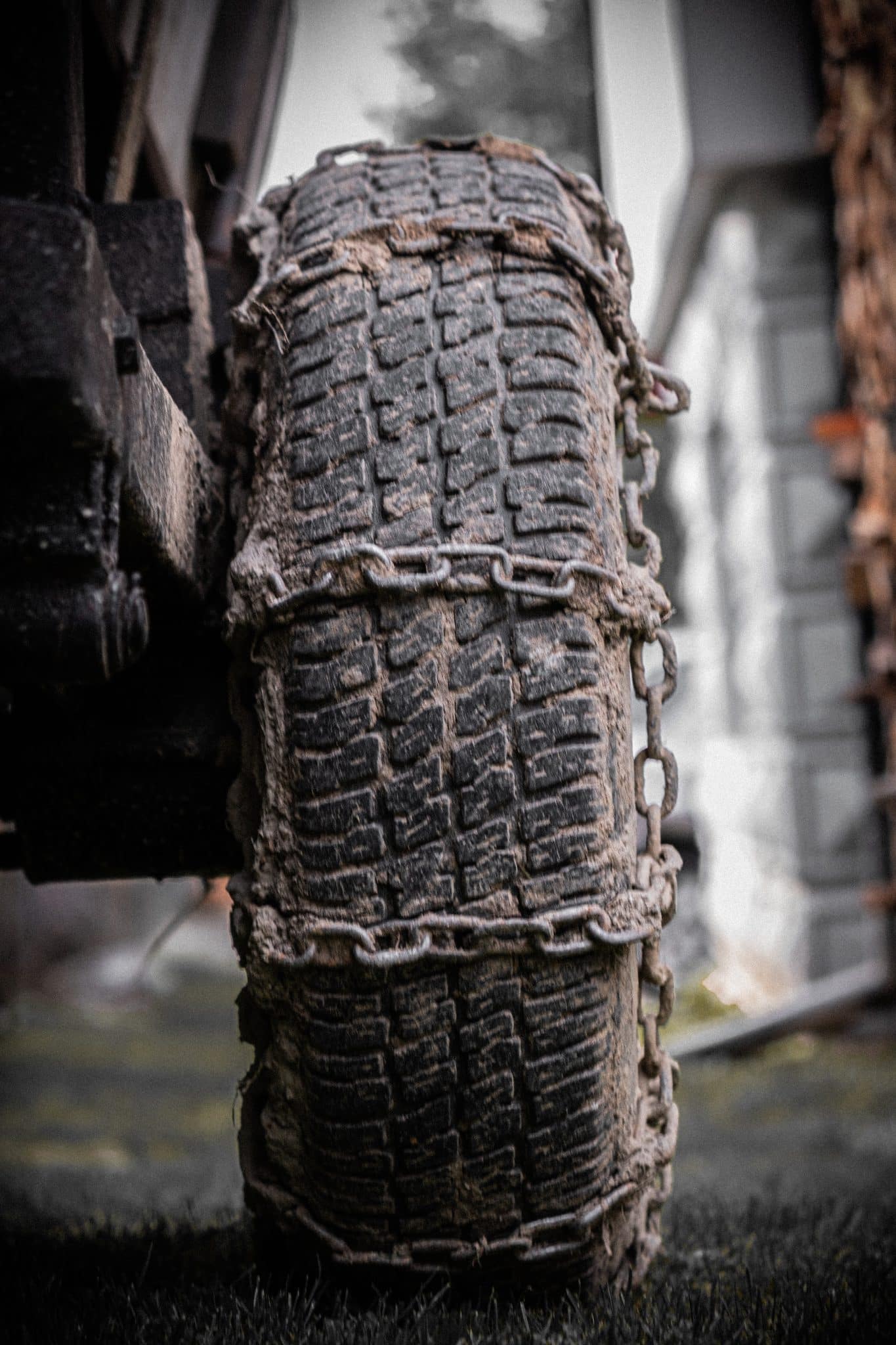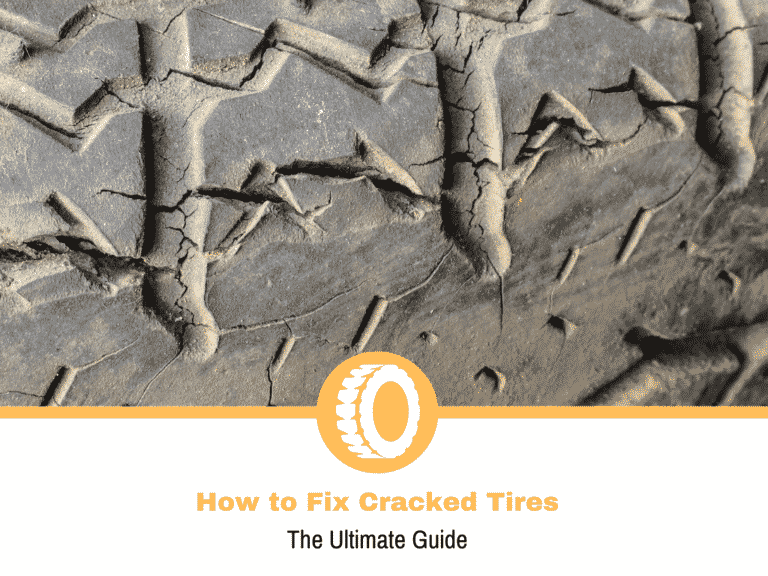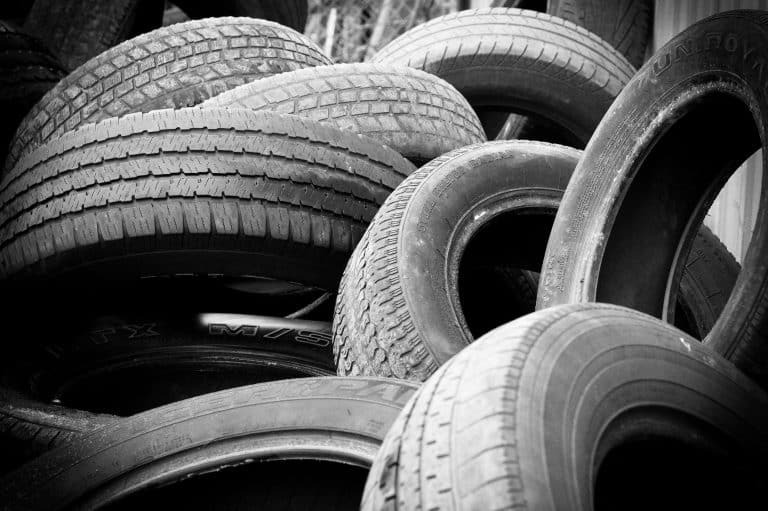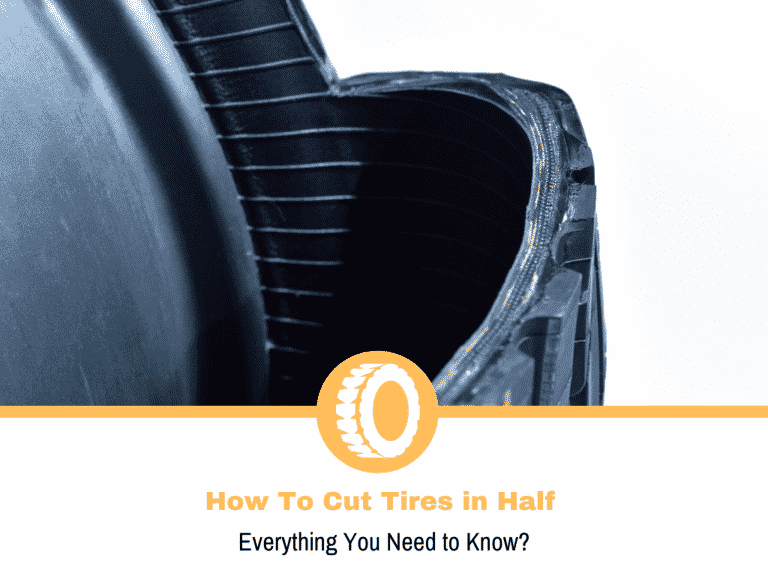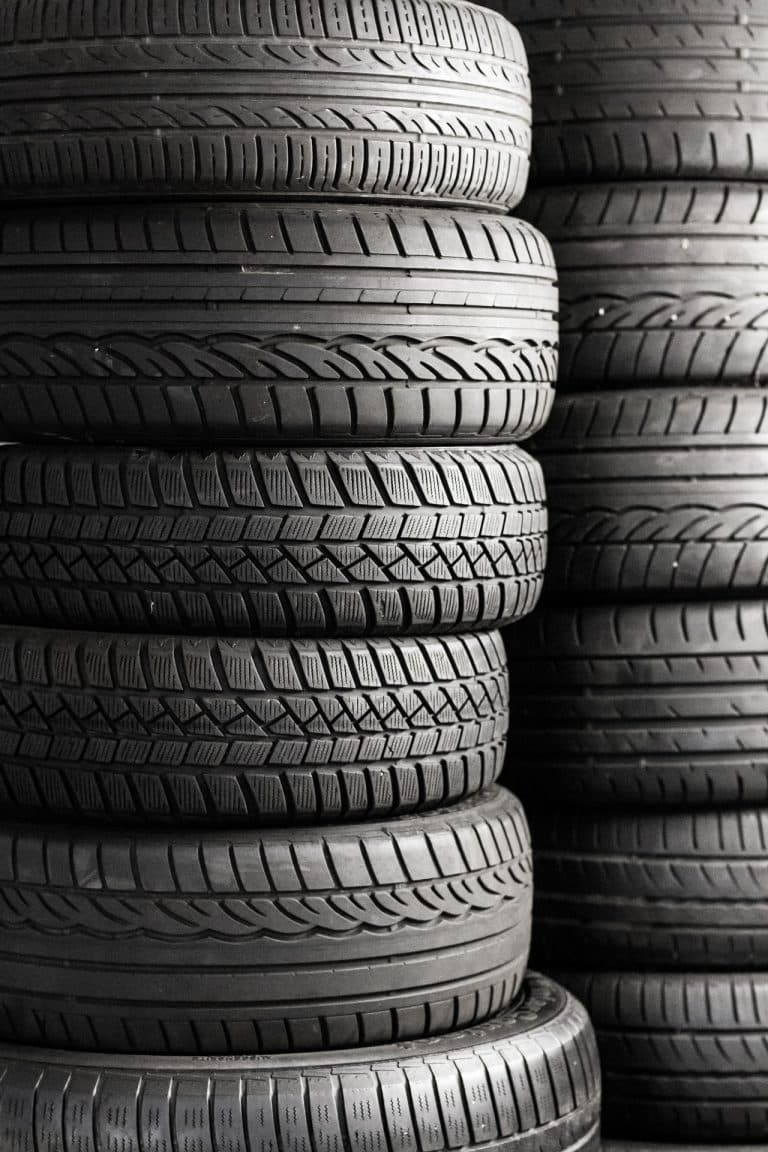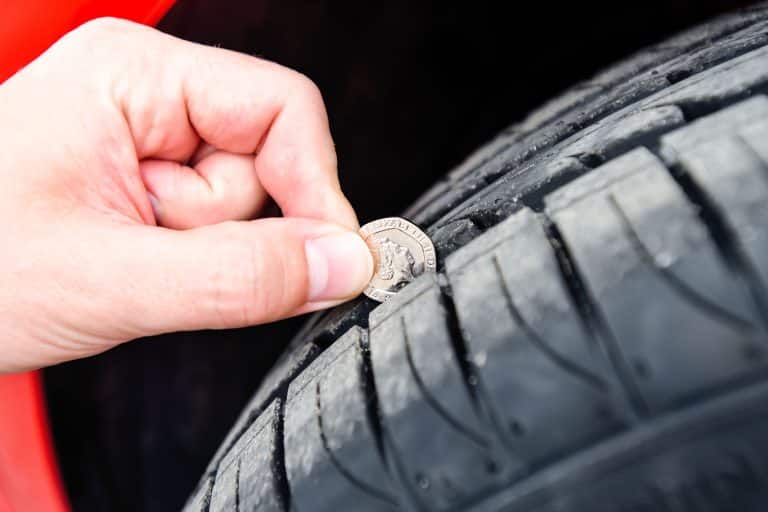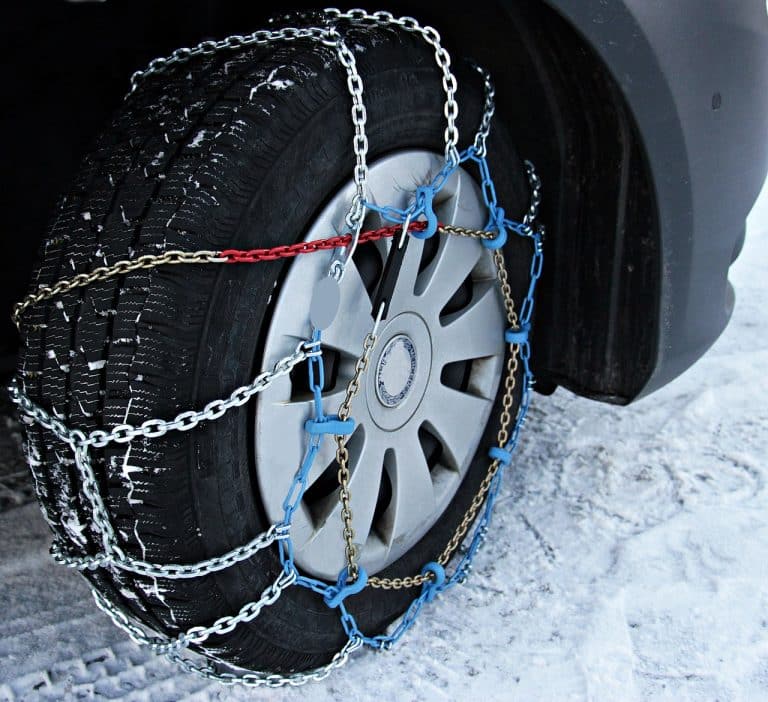Snow Chains vs Snow Socks vs Snow Zip-Ties
With winter just around the corner, most of us probably already switched to winter tires. In most cases, having these is more than enough to get through the winter, even if there are a few inches of snow.
Many of us rarely end up in a situation where winter tires struggle, so we think that we’re safe. As ideal as this seems, there are some exceptions.
Winter tires are excellent, but they don’t perform excellently in all conditions. Most of us don’t need “special” tires for these conditions.
To bypass the problem of getting that extra performance without the special tires, there are several products on today’s market. If you’ve read the title, you know which products I’ll be talking about.
For a long time, the chains were the golden standard dating back to the early years of the 20th century. In recent decades, we have got more products that are aiming to replace the chains and some drawbacks they offer.
If you read some advertising material, you’ll find that any of these products are the perfect solution. In reality, that’s not the case. Today I will outline the pros and cons of all 3 and see which is the best.
Snow Chains vs Snow Socks vs Snow Zip-Ties
Out of the 3, I’d go with the snow chains. Even though they are the most expensive option of the bunch, and probably the most problematic one to fit, they are still the best, especially in terms of durability. The other two aren’t poor performers, but won’t last as long and you may find yourself in situations where you’ll need chains.
What are Snow Chains?
I’m starting with the oldest product and that’s the snow chains. There isn’t much to explain here. This is a product that you fit to the driven wheels on your vehicle to get better traction in the most extreme situations.
The design is simple but effective. You have two circular chains that hold the ones that go across the tread. There are different patterns, but the principle is the same, so it’s not like you’ll have a massive difference.
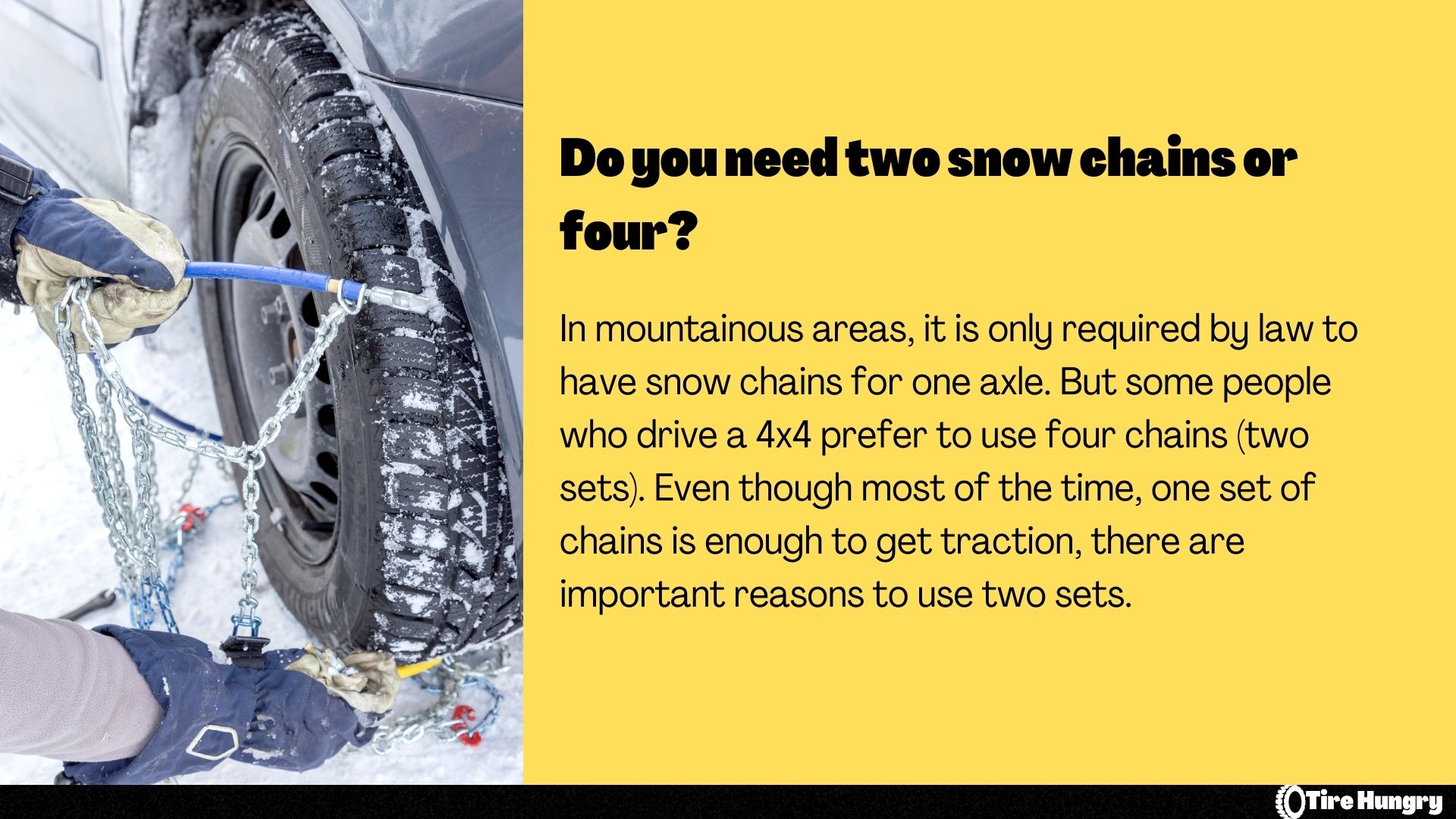
Chains come in multiple options and, in most cases, you can fit a single set to multiple wheels and tire sizes. Whenever you reach a situation where the winter tires won’t be happy, fit a set of chains and you’ll be good to go.
In terms of the fitting process, I cannot say that it’s a breeze, but it’s not too difficult. Manufacturers include a guide in the package, so as long as you follow it, you shouldn’t have too many issues.
Snow Chains Pros
There are many advantages to chains and the most commonly mentioned one is durability. If you use them as intended, there’s a good chance that they’ll outlive the car.
Flexibility is another advantage of chains. As I mentioned, a single set can be fitted to multiple sizes, so even if you change your vehicle, there is a good chance that the old set of chains will fit. A big disclaimer here is that there are exceptions.
The chains on my Corolla are for several 13, 14, and 15-inch wheels. This means that the set of chains will be useless on my IS250 because it’s running on 17-inch wheels.
I’m going to go with a spoiler here and say that chains are the best when it comes to performance. The weight of the car and the shape of the chains mean that you’ll have superior traction when compared with the other contenders on this list.
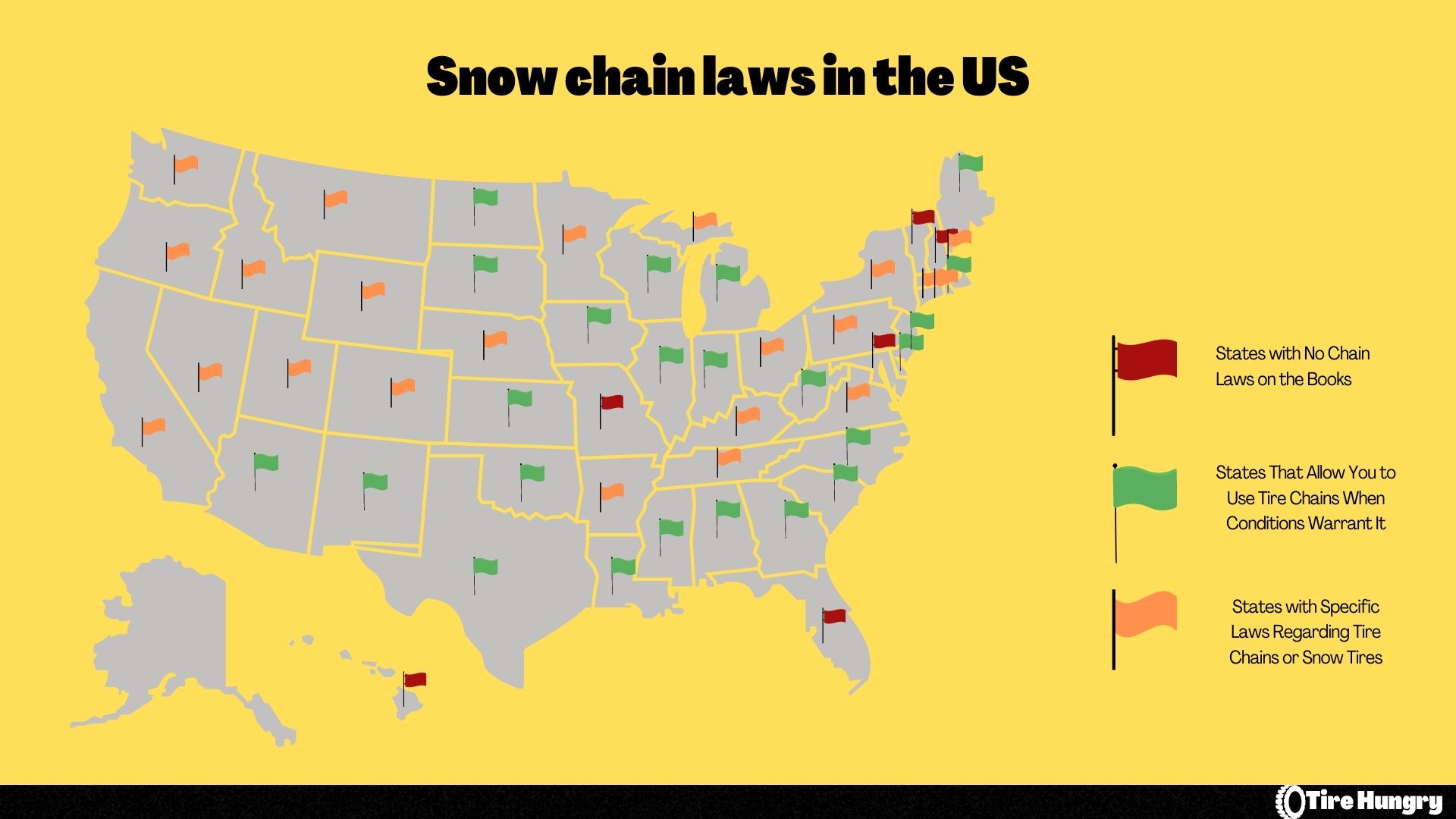
Snow Chains Cons
Nothing in the world is perfect and neither are the chains. Remember when I said that installing the chains isn’t a breeze? It isn’t the most complicated process in the world, but it isn’t easy.
Many people, myself included, don’t pay too much attention to storing them properly, so the chains can tangle. This doesn’t cause a problem for the chains, as it does for you if you need them in a pinch.
Another problem is how you fit them. Fitting them too tight can break some of the plastic links used for tightening them. On the other hand, loose chains can unhook themselves quite easily once you roll.
If the chains unhook and fall somewhere is the lesser evil here. You can pull over and refit them. The problem occurs if they tangle between the components around the wheel.
Speaking of fitment, another slight issue is clearance. I doubt many people would take a GT3 RS to a snowy mountain, but you will need some bigger clearance to run them.
They are less than an inch thick, so unless it’s a hypercar or some lowered model, you should be fine.
What are Snow Socks?
Based on the name, you can probably guess that this is a clothing product. Snow socks are fabric accessories that you fit to the driven wheels to improve traction in extreme conditions.
People think these are an alternative to chains. The reality is that socks are similar, but won’t perform the same.
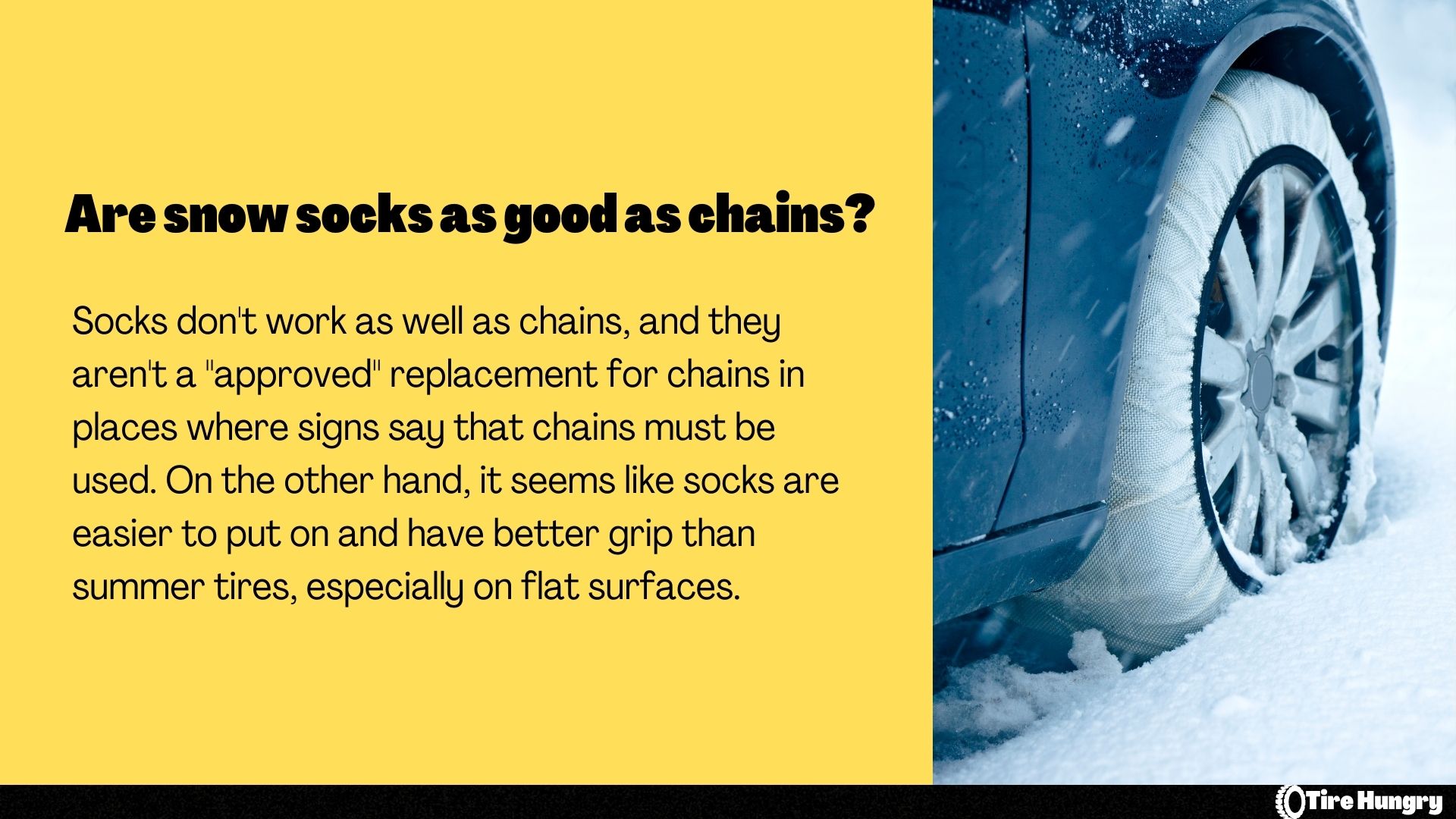
Socks are made from fabric with a specific design and pattern. This works similarly to the tread pattern on a tire, but here there is a bonus, especially with dry snow or ice.
As the tires roll with the socks, the fabric sticks to the snow or ice, improving traction. Don’t expect it to be superior, but it can help as long as you’re aware of a few things.
Like with the chains, the snow socks don’t come in a one size fits all, so make sure you look at that before you buy them. The fitting process seems simpler, but it’s not.
To fit a set of socks, you need to cover the part of the tire that’s not on the ground. For the part under, you’ll need to roll the car and then finish by tightening the fasteners.
Snow Socks Pros
I may appear a hater of snow socks, but there are some advantages. Price is one of them, in most cases at least. A pair of socks costs less than a set of chains, so many people are considering them.
With the fitment process, there is an advantage, but there’s also a disadvantage which I’ll get to in a minute. The advantage is that you don’t need to worry about the socks being tight or loose like with the chains.
Some socks come with an elastic band, which makes things even easier for fitment.
Storage is another advantage of socks. They are lighter and there are no chances of getting tangled, regardless of how you throw them in the trunk. It saves time when you need to install them in a pinch because they’ll be ready instantly.
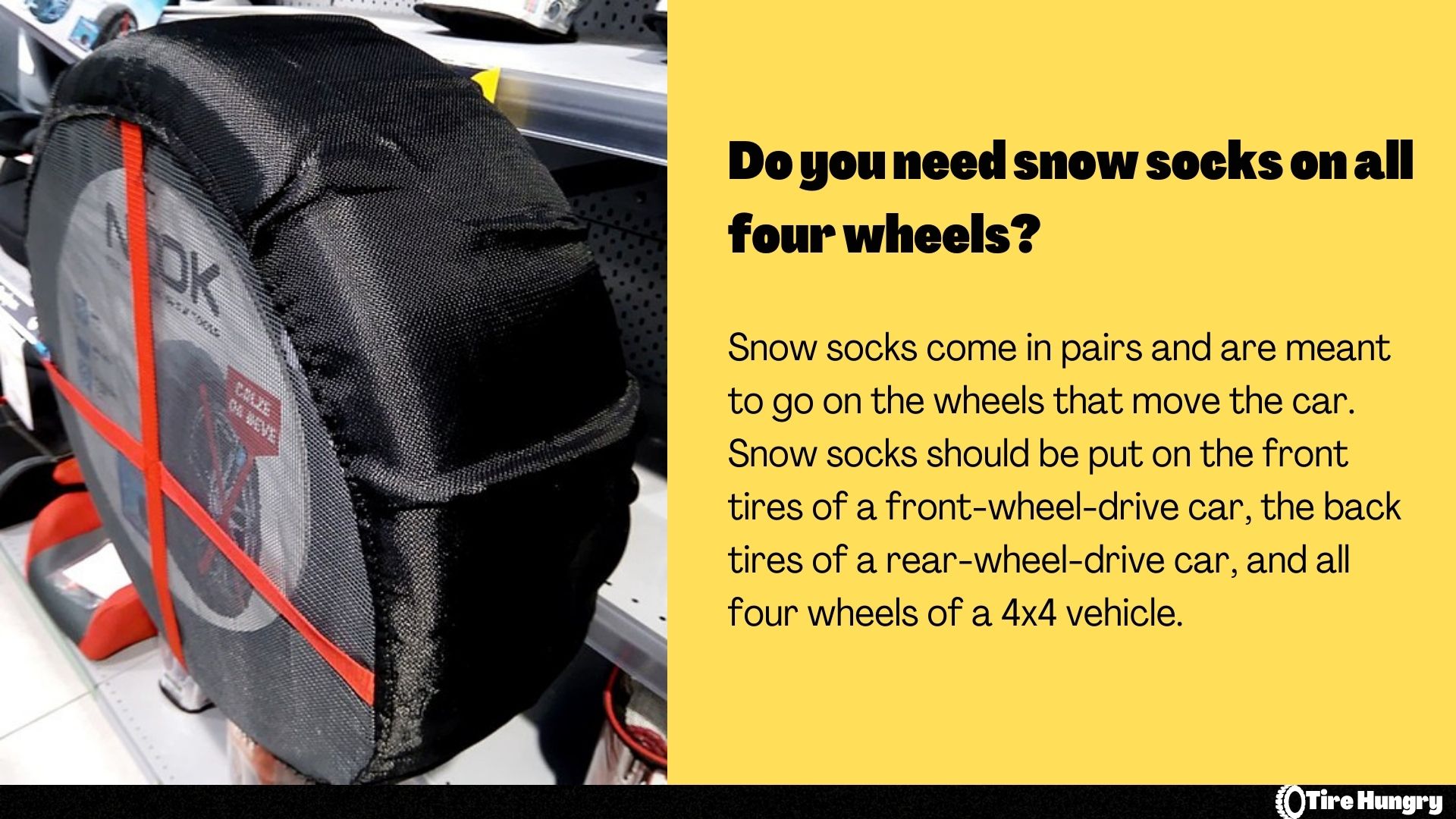
Snow Socks Cons
The socks seem like a perfect product, but they are not. Longevity comes up in many conversations and with good reason.
Snow socks are made from fabric, so unlike metal chains, you shouldn’t expect them to last too long. This depends on how often you use them, but with regular use, I doubt they’ll outlive the car.
The added performance is another disadvantage that snow socks have, but not in every situation. If you’re running all-season tires, the socks can help and get a noticeably good performance. When compared to winter tires, I think you’ll be better off relying on the tread and the compound.
Fitting the socks is a simpler process than with chains and there’s no denying that, but there’s a problem. To get the sock on the tire completely, you’ll need to roll the car to cover the part that’s underneath.
This may sound simple enough, but if you’re stuck, then it can be problematic. You may not be able to roll the car, so you’ll need to rely on wheelspin. It may work, but you also may end up tangling the socks around the components behind the wheel.
Zip Tie Snow Chains
You’ve all seen the tik tok videos where people use zip ties to get unstuck from snow. Someone liked the idea so much that it turned into an actual product – zip-tie snow chains. They come in various names, shapes, and sizes, but the idea is the same.
In most cases, this product should act as a replacement for snow chains, but without the tedious process of fitting them. These are like straps, and in most cases, the part that goes on the tread is made of plastic with metal studs. The zip ties are used only to tighten them on the tire.
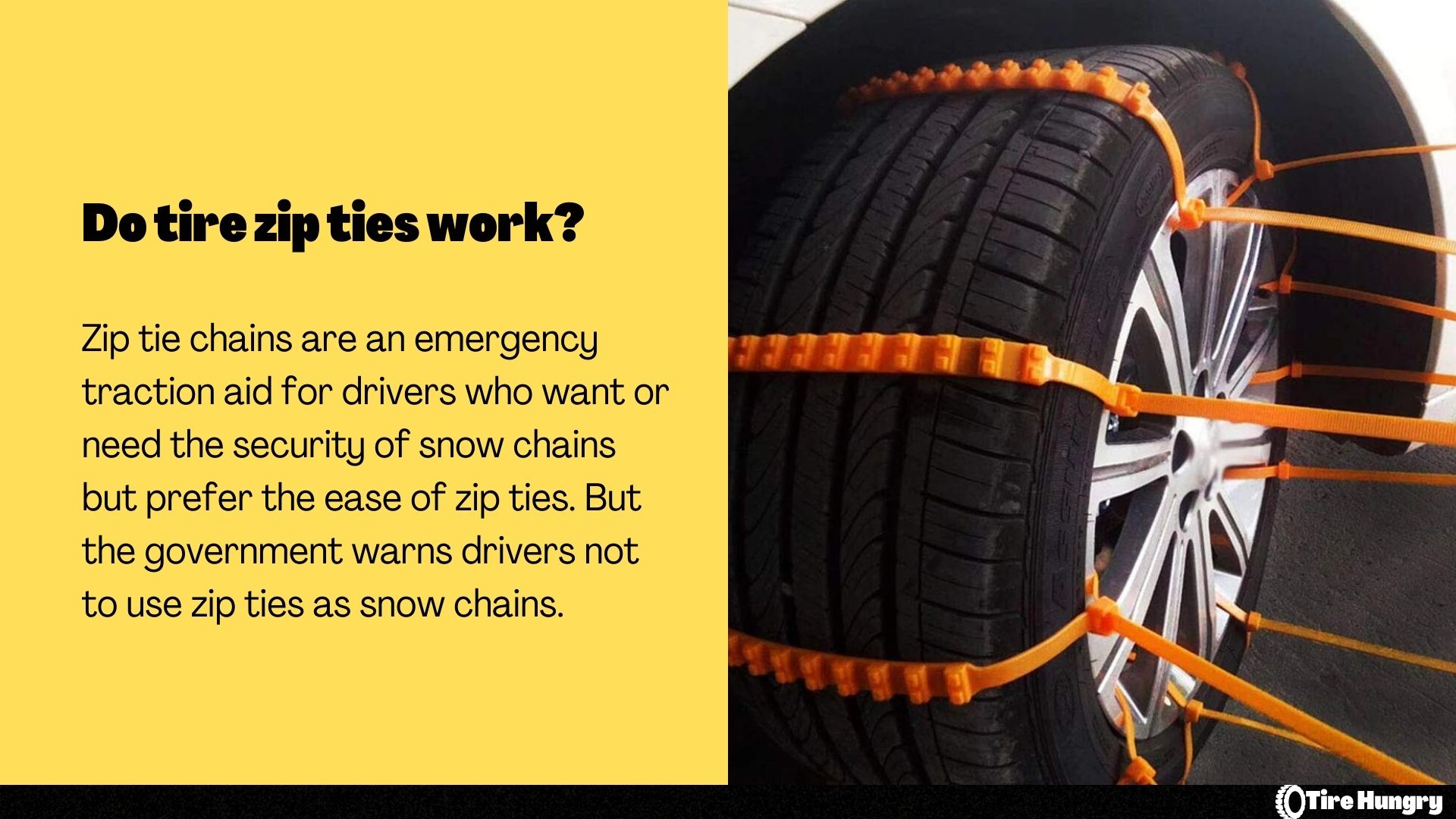
I’ve also seen these with nylon straps, but the principle remains the same. You fit them to the driven wheels to get better traction on snow and ice.
The main reason these exist is that they are much easier to fit when compared with chains. As for size, it’s one set that can be fitted to a wide range of tires.
In some larger applications with trucks, you may struggle, so I’d advise you to measure the dimensions. This way, you’ll know if you’ll be able to fit them.
Zip Tie Chains Pros
Like snow socks, one of the major advantages of zip tie chains is the price. They are more affordable than chains, so it’s normal to reach for them.
Size and fitment are the next pro and I can completely understand this. The zip ties usually come in a universal size, and you’ll be able to fit them to a wide range of wheels. There may be some issues with meaty mud-terrain tires, but that’s a rare sight.
Ease of fitment is another reason these seem better than some of the other options. It’s like tightening zip ties, literally, so it takes a few minutes to fit them to both wheels. Even the ones with the straps aren’t overly complicated, so no worries about that.
Zip Tie Chains Cons
Things aren’t perfect in the zip tie world and there are some disadvantages to these as well. Durability is the main issue here.
Plenty of forces are exerted on the zip ties, and they have several failure points. The zip ties or straps can fail, as well as the plastic that goes over the tread. Even though I would put these are slightly more durable than the socks, they aren’t as good as the chains.
What About Studdable Winter Tires?
I’m glad you asked that and there’s a reason they aren’t as popular as you may think, at least not in this case.
Studdable winter tires are models that come with stud holes so that the studs can be inserted. The reason they aren’t used “in a pinch” is that it’s not something you can do on the side of the road.
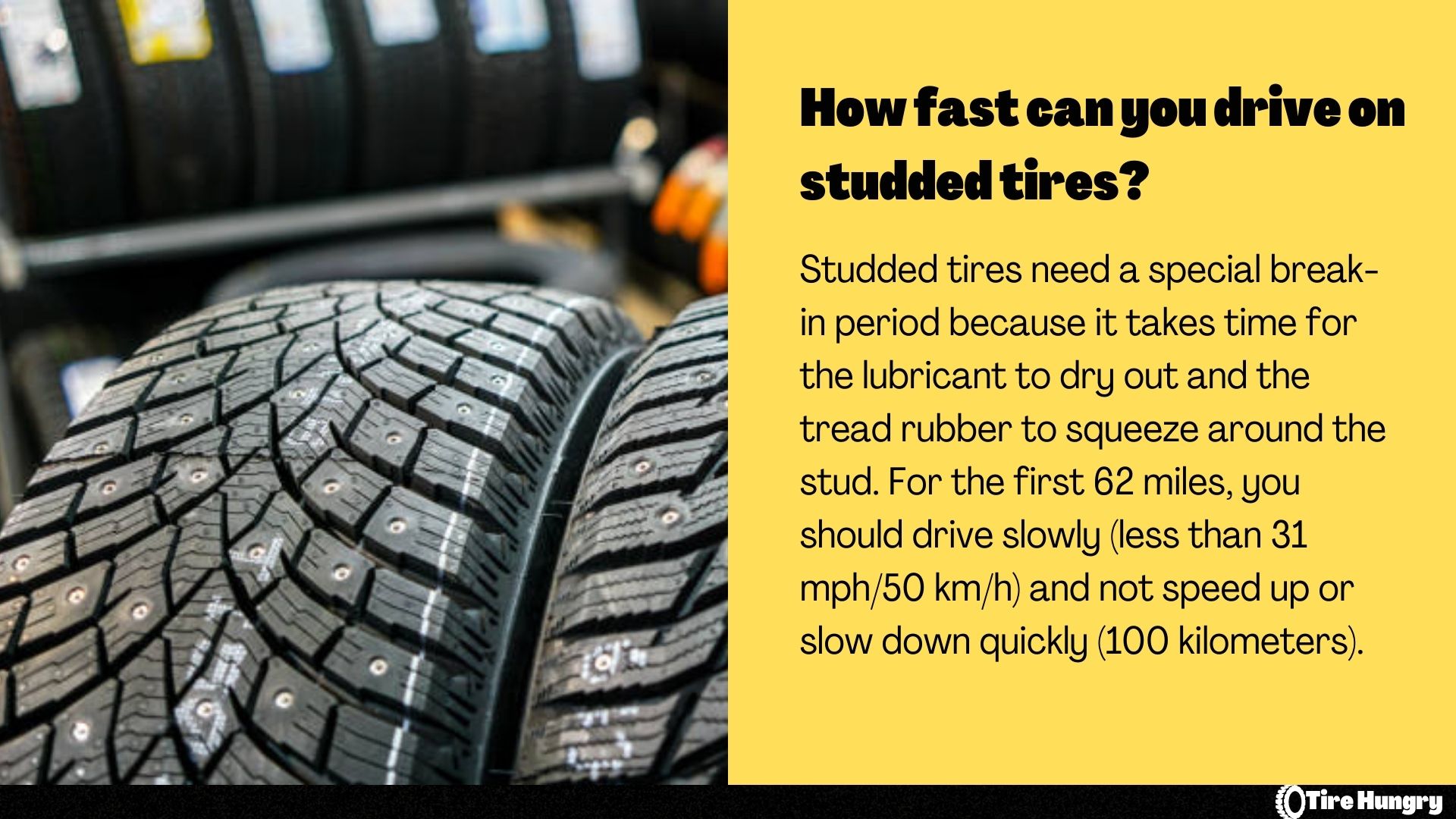
Stud installment is a long process, and you can either go to a tire shop or do it yourself at home. Regardless of which route you take, special tools are needed and it’s not exactly a 5-minute job.
If you plan on going somewhere icy, then you can get the winter tires and fit them with studs and be on your way. With that said, there are some laws about that, so you should check which ones apply in your area.
When to Use These Devices?
There are multiple conditions when you should consider using these, which is why it’s ideal to always have them in your car. Since they help you in harsher conditions, use them in harsher conditions.
Almost all winter tires will handle snow without too many problems. There will come a point when the snow becomes too deep, which is where these devices come into play. For winter tires and deep snow, I’d recommend going for snow chains or zip-tie chains. They can dig in and enhance traction. The socks aren’t bad, but if you already have winter tires, they won’t help too much unless the tires are bald.
If you’re driving with all-season tires in winter conditions like snow and ice, any of these will improve the performance. The socks will struggle a bit more on ice than the chains, but they’ll still bring some improvements.
The only situation where I’d say that the socks are better is in terms of long-term damage to the tires. Regardless of which device you use, wheel spin is unavoidable. When driving on ice, you are driving over a hard surface and once the wheels start to spin, it puts more strain on the tread. Doing this for a prolonged time can damage the tire. Socks don’t have this problem because it’s a thin piece of fabric.
Another situation where the socks may come in handy is with tires that have low clearance. The regular or zip tie chains are taller, so if there isn’t too much space between the tire and the wheel well, the socks are your only option.
When to Avoid These Devices?
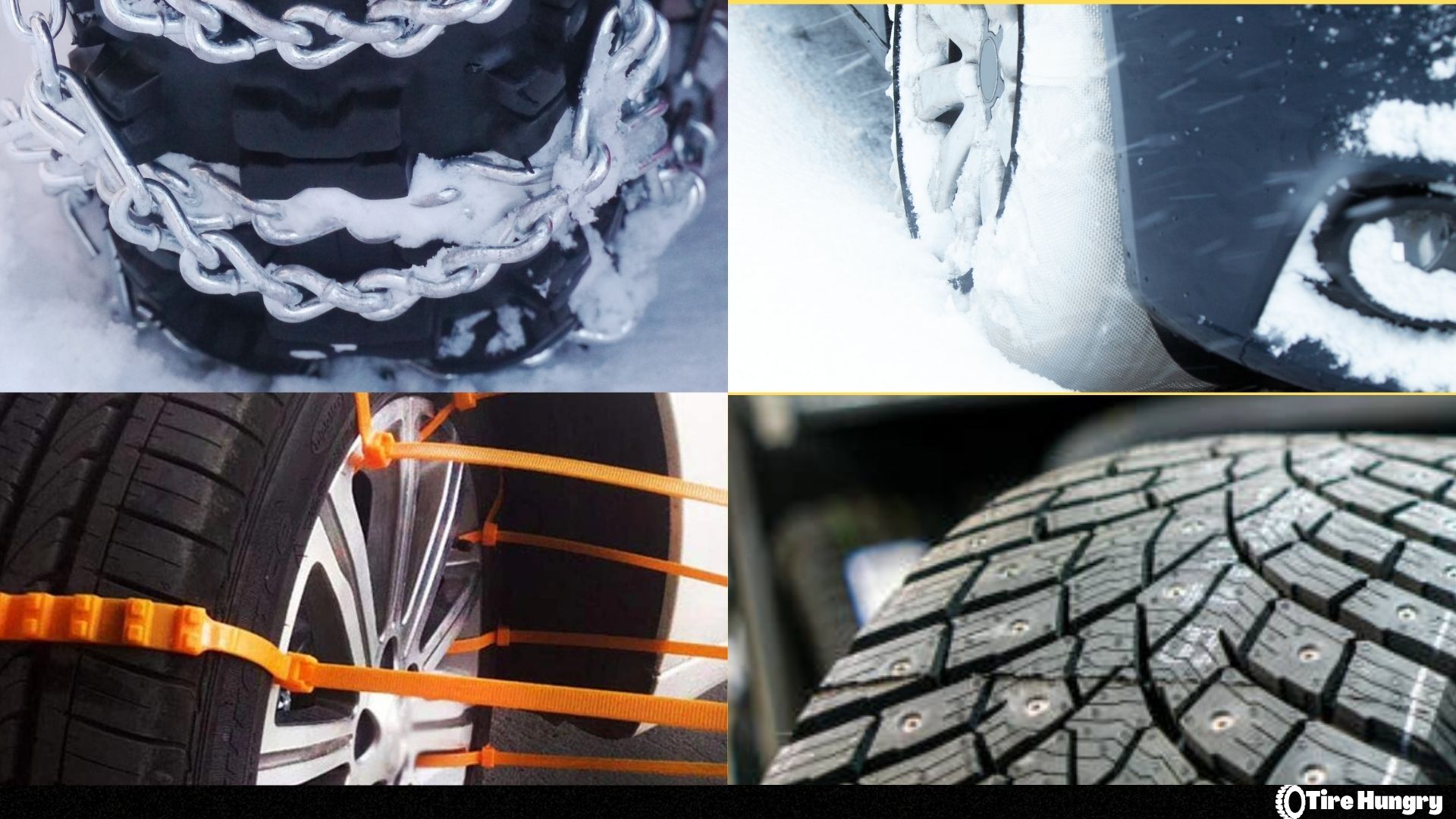
Legality is a common problem with these kinds of devices, especially with chains. Some states ban them, while others require you to have them in your car during the winter. The reason behind this is that the chains can damage the road, which isn’t a nice thing to do. Next up is the damage to your tires that can make them unsafe for the road. The snow socks don’t fall in this category, so you won’t have to explain your actions.
Next up are speed and use case scenarios. You may think that fitting your chains at the beginning of winter and leaving them on until spring is smart, but it’s not. Apart from the legal problems you may have or the damage to your tires, these devices have a speed limitation.
The speed can vary from one product to another, but in most cases, you’re looking at no more than 20 to 30 mph. Imagine doing 20 on the highway with a set of chains, ripping the tires to shreds.
Consider these devices only when the conditions get worse and the tires won’t deliver the necessary performance. Another situation is if you get stuck. You’ll fit them until you reach a road where the conditions are better and then take them off.
Regardless of any promises you may read, you shouldn’t drive these on clear roads.
Conclusion
If you’ve been reading the article carefully, you have an idea of my opinion on these gadgets. I’d recommend going for the snow chains as they are the most durable and best option. Sure, the socks and zip ties will do the job, but they aren’t as long-lasting.
You will pay more for a set of chains, but they will last as long as you still own the car, and maybe you can use them on the new one. With socks or zip ties, you won’t get the same level of durability. Initially, you will save a few bucks, but in the long run, you may need to buy them multiple times.
Regardless of which option you choose, using it as intended is crucial. Within each package, you’ll get a user guide where the manufacturers will outline which are the proper conditions for the products. As a general rule, use them only when the tires aren’t able to offer the performance needed.
